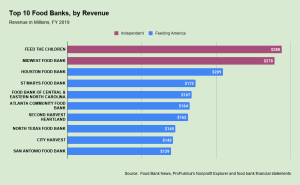The Giving USA numbers were released and they show that donations to charity in their various forms totaled $290.89 billion, up from the adjusted $280.3 billion from 2009. The 2008 numbers were also significantly adjusted this time around.
This begs the question: What can nonprofit executives actually do with these numbers? There was a time when Giving USA was the only measure of overall giving, taking the Internal Revenue Service (IRS) numbers and compiling stats from other categories of giving. It was accepted as the sector’s benchmark, even though it was a flawed estimate.
Seeing the Giving USA numbers harkens one back to a simpler time, before databases the virtual size of Vermont were crunching numbers and providing analysis. In some cases the Giving USA estimates are based on data 24 months old. Today, databases can spot giving trends within days of the movement; that’s actionable information, not something that’s nearly two years old.
The 2009 and 2008 data were dramatically revised because those doing the math under-estimated the depth of the recession and its potential impact on giving. Also, the calculations “do not show changes that any one organization or any one geographical region or city might have observed.” Here’s the question again: What can nonprofit executives actually do with these numbers?
It was pointed out that the revised estimates were originally roughly 1.25 percent off the mark. If NASA’s slide rules were that far off, astronauts would have missed the moon. It brings up the old economics joke of a billion here, a billion there, and before you know it you’re talking about real money.
The question remains: What can nonprofit executives actually do with these numbers? Other than academics studying the evolution of giving and providing an unstable benchmark, the answer is virtually nothing. One of the benchmarks it shows is how far technology has brought the sector, with real time, actionable data. These are databases not being tapped by Giving USA because they are in most cases proprietary.
So, grab a copy of Giving USA and head down to your local malt shop where Little Richard is blaring from the table-mounted jukebox and Marty McFly is impressing people with his knowledge of what might be in the future. When you are finished, go back to the office, fire-up your computer and do some computations that can move the needle of giving that seems stuck at about 2 percent of U.S. Gross Domestic Product. NPT











